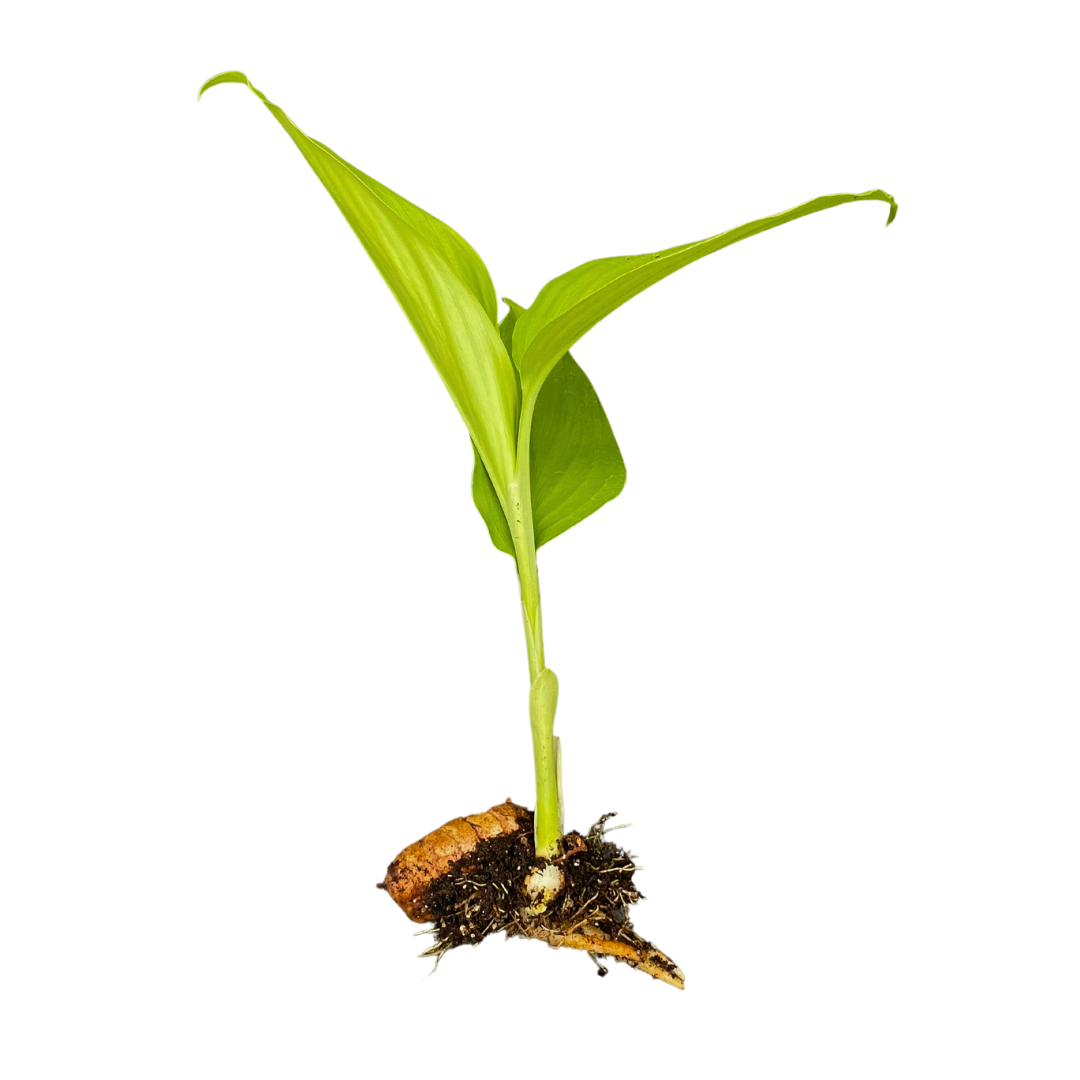Turmeric Plants
Turmeric Plants
5 Plants Per Order
Couldn't load pickup availability

Our turmeric plants are grown in our greenhouse from turmeric rhizomes harvested on our farm. This is a standard orange turmeric variety that consistently provides solid yields for us each year. It can be grown in an in-ground garden, raised bed, container, or even an indoor pot. Turmeric plants can get 4-5' tall, so account for that if growing in containers.
Turmeric prefers well-drained soil and should not be planted in an area where water regularly pools after a heavy rain. If your soil doesn't drain well, consider adding a significant amount of compost prior to planting. A 6-8" plant spacing is usually sufficient, although you can give them more space.
Once you have an established container or plot of turmeric, you can save rhizomes each year to replant the following year. You can also leave the rhizomes in the ground and they will sprout the following year when temperatures warm. We've found that turmeric planted in the ground doesn't usually sprout until late June or early July when soil temperatures warm significantly.
Will It Grow in Your Zone?
Turmeric is a warm-season plant with tropical origins in India. In zones 8 and warmer, it can be grown in the ground with no issues. It does require a long warm growing season for substantial production. In zones 7 and north, you'll want to plant turmeric in indoor pots and move outside when the risk of frost has passed.
Although turmeric is a heat-loving plant, we've found that it can benefit from some partial shade. In our intense south Georgia heat, we utilize shade cloth to keep the leaves from folding as much during the day. This creates less stress on the plants and promotes more growth throughout the warm season.
Health Benefits of Turmeric
Turmeric is fun to grow, but it's also great for you! The active ingredient in turmeric is cucurmin, which has been demonstrated to have a wide variety of health benefits. Turmeric helps with aches and joint pain associated with inflammation and arthritis. It also has been shown to help with muscle soreness, eye health, and kidney function. You can add it to food as a spice or use the ground product in smoothies, teas, and other drinks.
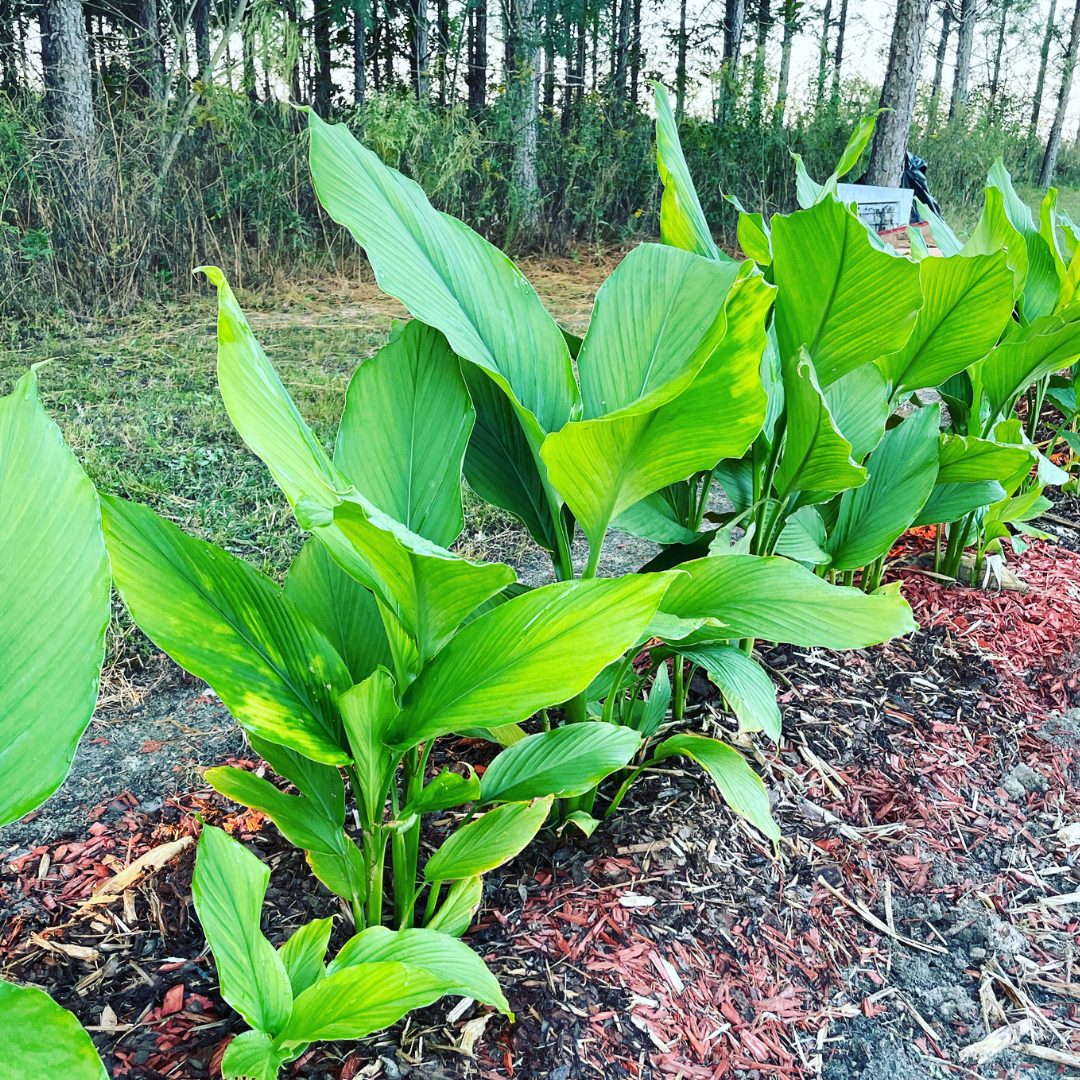
Planting and Growing Turmeric
Turmeric is a warm-season plant that loves the summer heat. It can be grown in full sun or partial shade. You can plant it in your in-ground garden, raised beds, and containers. You can even grow it indoors! Give each plant at least 6" of space when planting. Turmeric prefers well-drained soil with plenty of organic matter. Add compost to your planting area for best results.
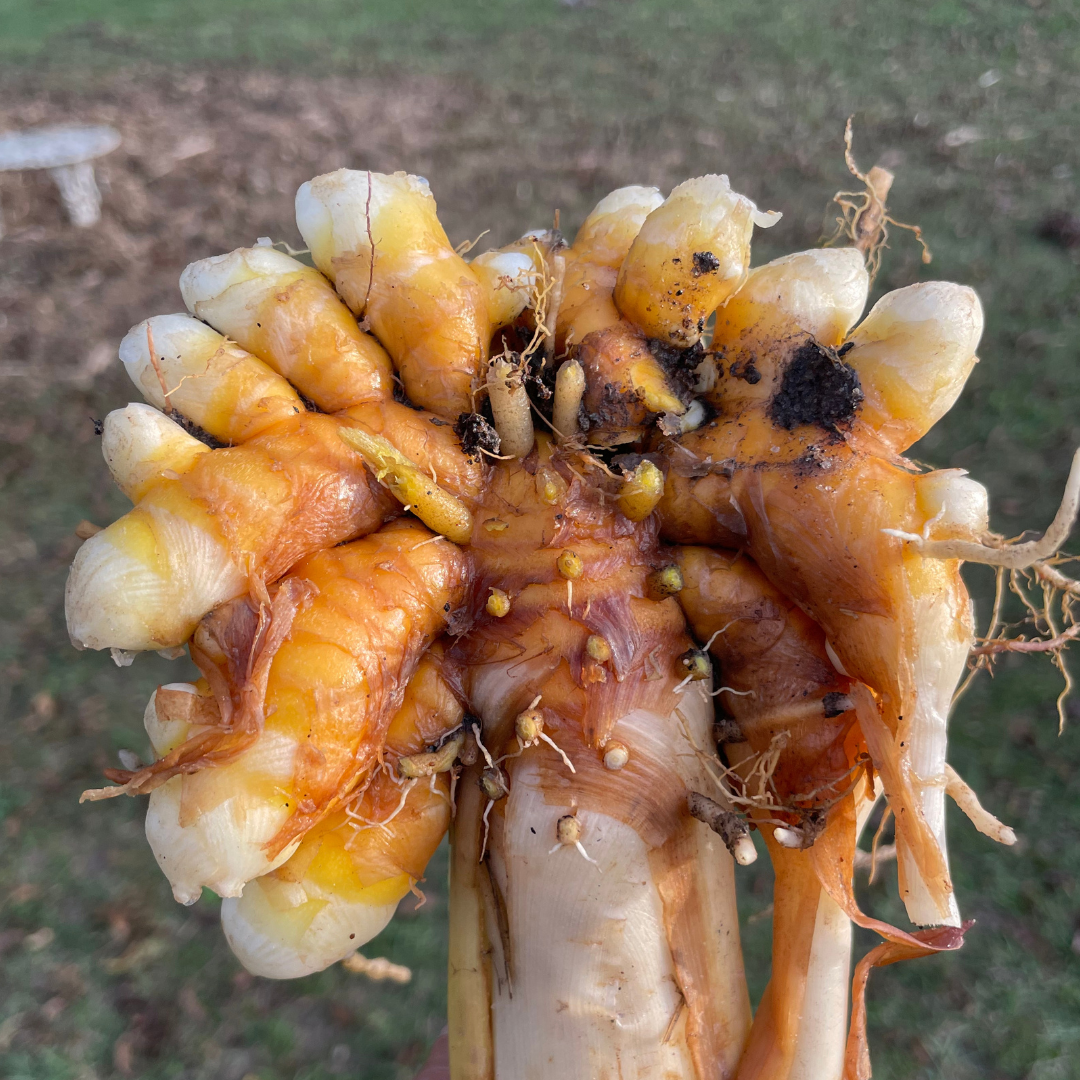
Harvesting Turmeric
Leave your turmeric plants in the ground throughout the warm season to maximize yields. You can harvest right before your first frost or allow the frost to kill the plants before harvesting. Some growers will also leave the turmeric in the ground and grow it like a perennial. Once soil temperatures warm the next year, it will sprout from rhizomes left in the soil.
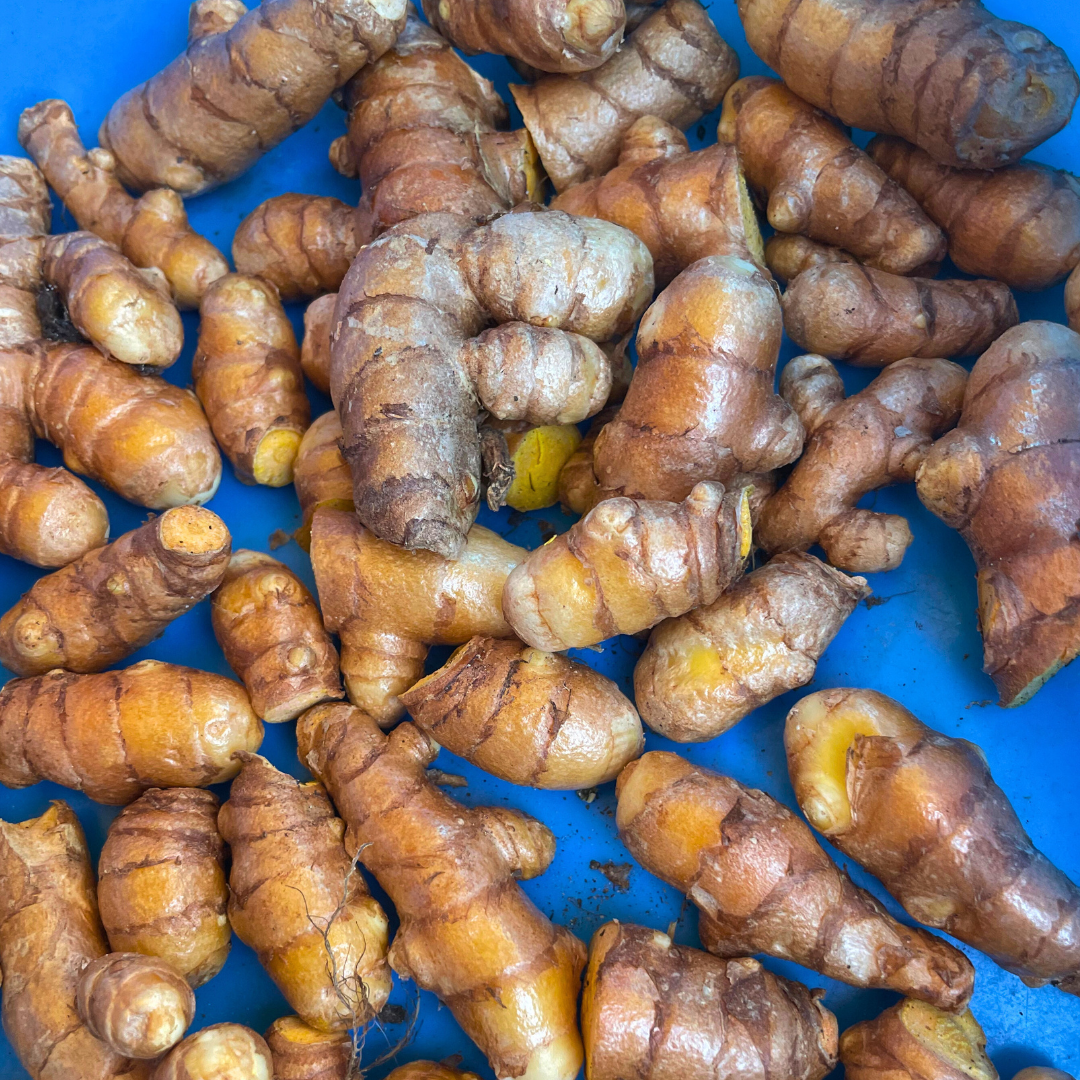
Storing Turmeric
After pulling your turmeric plants, cut the turmeric bunch at the base of the plant if it's not already disconnected. Rinse off the soil and allow the turmeric to dry a couple days in a cool, well-ventilated area. Place the rinsed and dried turmeric in a bag and store in the fridge. We recommend breaking apart the turmeric rhizomes into small pieces for easier, compact storage.
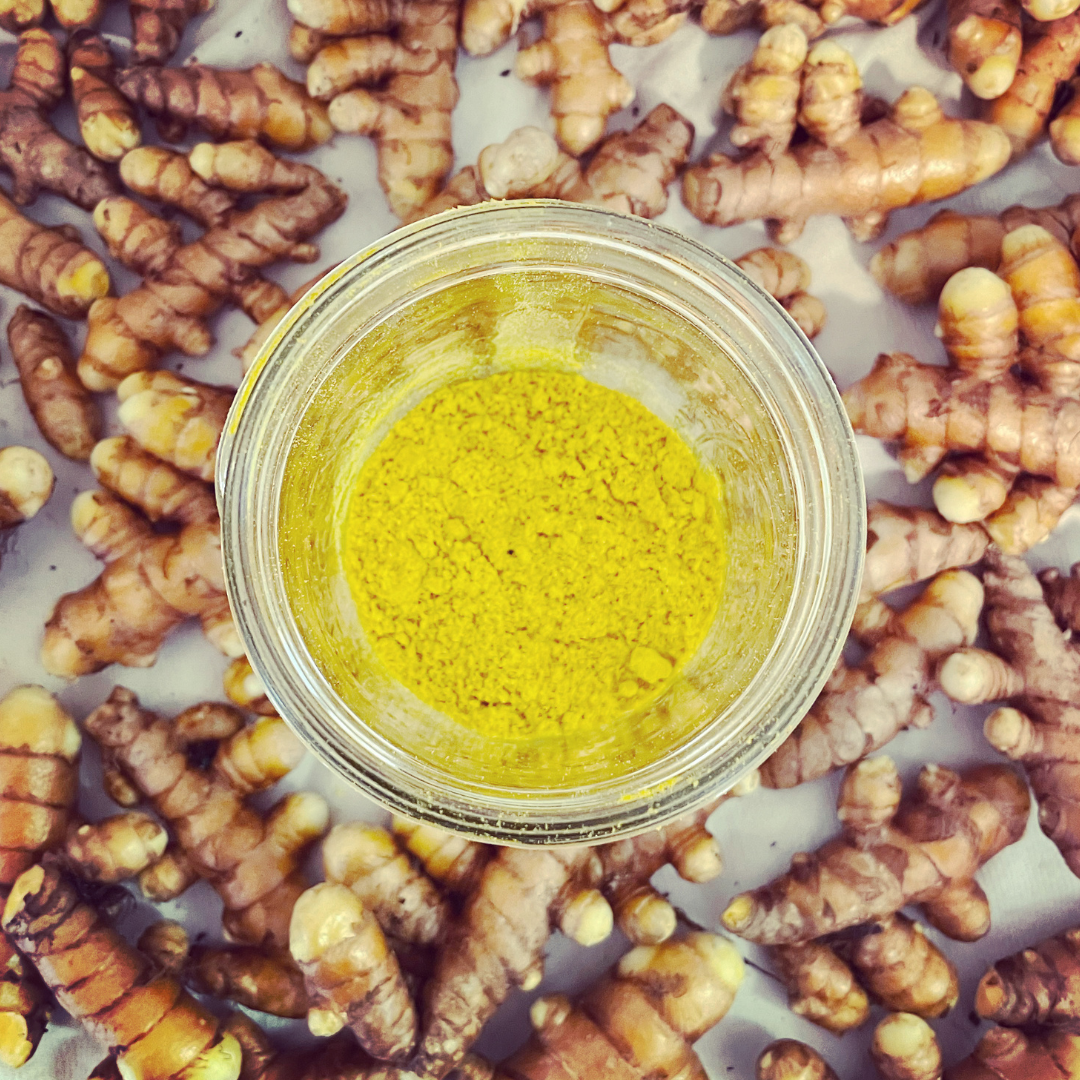
Drying Turmeric
You can use fresh grated turmeric as a spice when cooking or as a healthy addition to warm teas. You can also dry the rhizomes in a dehydrator or oven (set on a low temp) for long-term storage. Dry the turmeric, then grind it with a food processor and store the ground product in a jar. You can then use the powder for smoothies, teas, cooking, and more!

